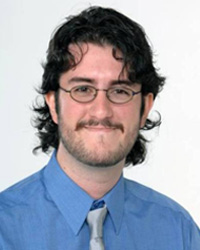 Henry Diaz (Computer Engineering) About DOE Fellow: Accomplishments as a DOE Fellow: |
For more information on the Hanford Site visit:
http://www.hanford.gov/

A tank farm at Hanford, Washington, built in the 1940s, used to store radioactive sludge from plutonium processing. (Source: National Geographic)
In the summer of 2008, Henry interned at the Oak Ridge National Laboratory Computational Sciences and Engineering Division under the mentoring of Dr. Glenn O. Allgood. While there, he assisted Dr. Allgood on the ACDEPP (Air Cargo Explosives Detection Pilot Program) created by the Department of Homeland Security in order to provide critical knowledge to help the TSA (Transportation Security Administration) make future decisions on how to handle air cargo. The ACEDPP will do this by assisting in the technological research and development planning for the nation’s air cargo security infrastructure. Data was gathered to determine the flow of air cargo and how quickly it must be screened. One of the interests of the DHS in the program is data illustrating the economic and operational impacts of enhancing cargo screening levels in air carriers. The Oak Ridge National Laboratory was one of the national labs with a hand in this project and during his internship, Henry assisted in the analysis of the data that was collected and did logistics on what methods (e.g. genetic programming) could be used to optimize the data for efficient, safe and profitable solutions to air cargo dynamics difficulties.

A general (very simplified) outline for genetic programming is as follows:
- A population of random solutions is formed.
- The best solutions are given precedence in forming offspring solutions.
- The best in the population combine their code to create a new, possibly better suited population of solutions to replace the least fit of the previous generation.
- The process is repeated until a satisfactory approximation is found.
